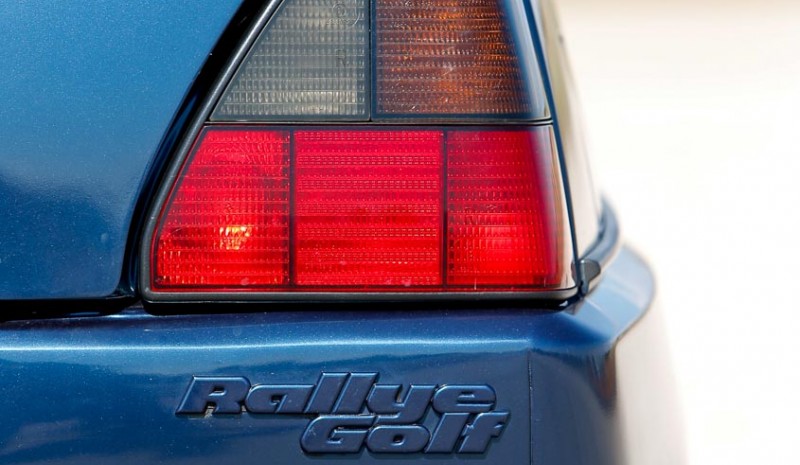Cars for remembrance: Volkswagen Golf GTI G60 and Rallye
At the time of development of the turbo, VW turned to a kind of unprecedented volumetric compressor. Although successful, today engined Golf G60 was not considered are highly desirable classics.
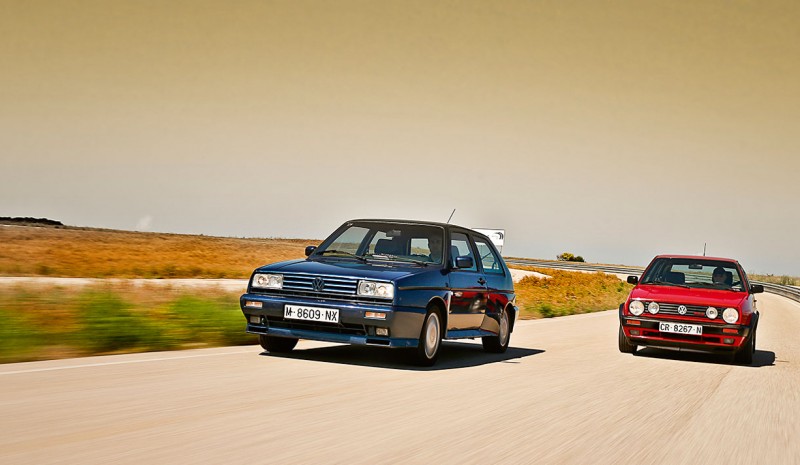
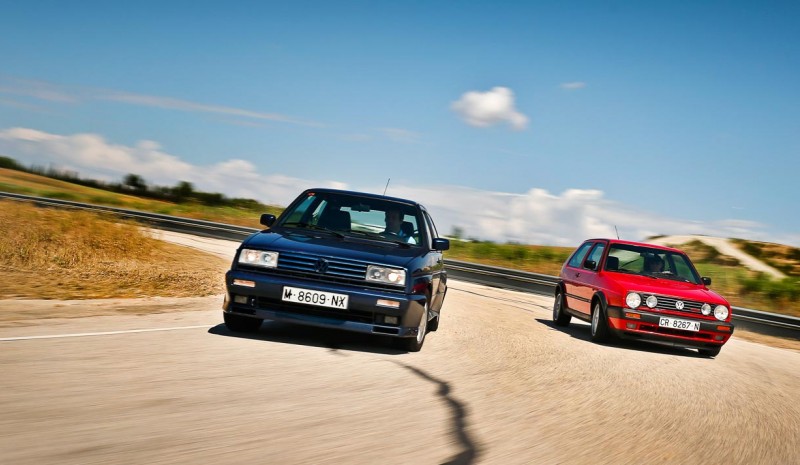
When Volkswagen was already developing the third generation Golf was decided to first to launch a more powerful version of the VW GTI Mk2. He had been experimenting with turbocharging in gasoline engines and even there were a number of tests Scirocco with a turbocharged 150 horsepower engine but, unlike Audi, could not get the desired results.
When Volkswagen decided on a volumetric turbocharger, Roots instead of the guy who was the most common, it was decided by the compressor “G”. Léon Creux patented in 1905, but required materials and production processes that did not exist then. The compressor operation key G is the sealing between a movable wall and a fixed, among which it is compressed air from the outside to the center (s centripetal compressor). It’s hard to get, especially when the car has many kilometers and has taken many turns compressor (the engine 1.7).
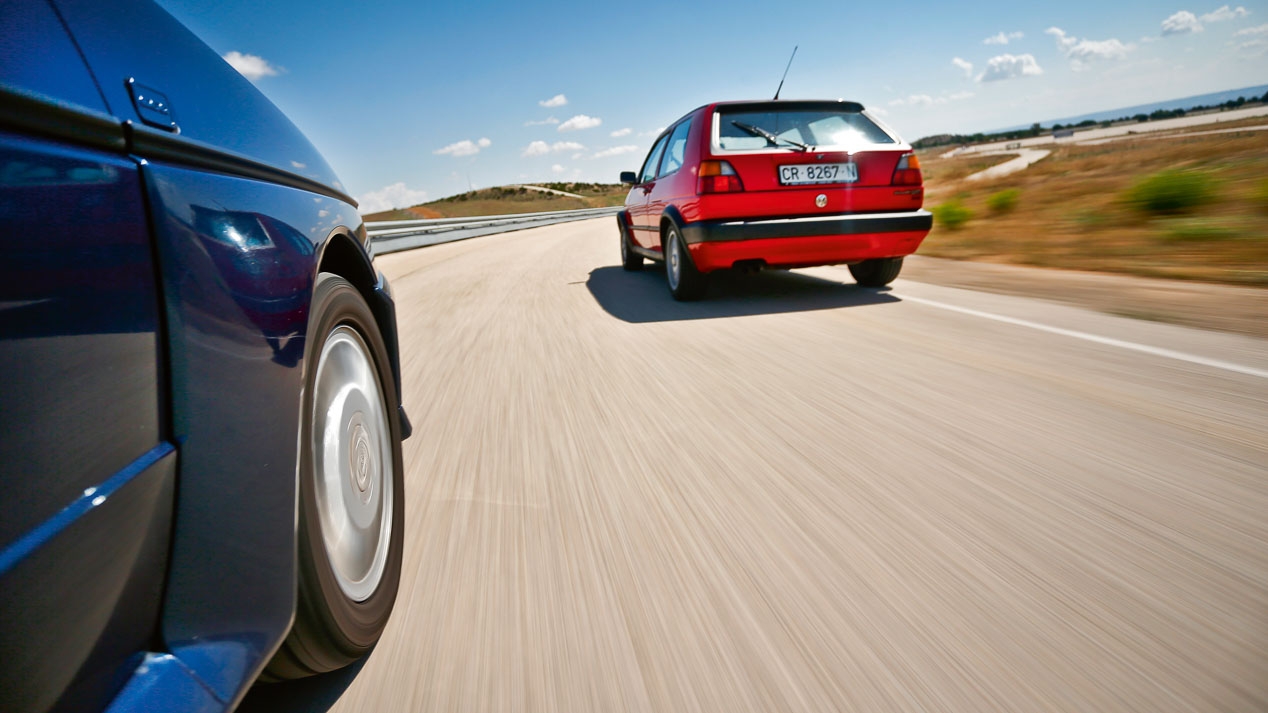
VW Golf Rallye first …
Before the release of GTI G60, the German mark showed a prototype car a product designed primarily competition, the Rallye Golf. He had almost everything that he could install a Mk2 Golf at that time, G60 engine and wheel drive Syncro, but not by 16 valve cylinder head production capacity. The displacement was reduced from 1,781 cm3 to normal 1,763 (Less diameter and the same stroke) to remain below the limit of 2.5 l by applying the factor 1.4 being supercharged.
As Racing Car Group A, he Rallye was a failure because models with more powerful turbocharged engines with a total system more effective traction faced. Only he ran three rallies of the championship 1990 and his best result was a third in New Zealand, against weak competition.
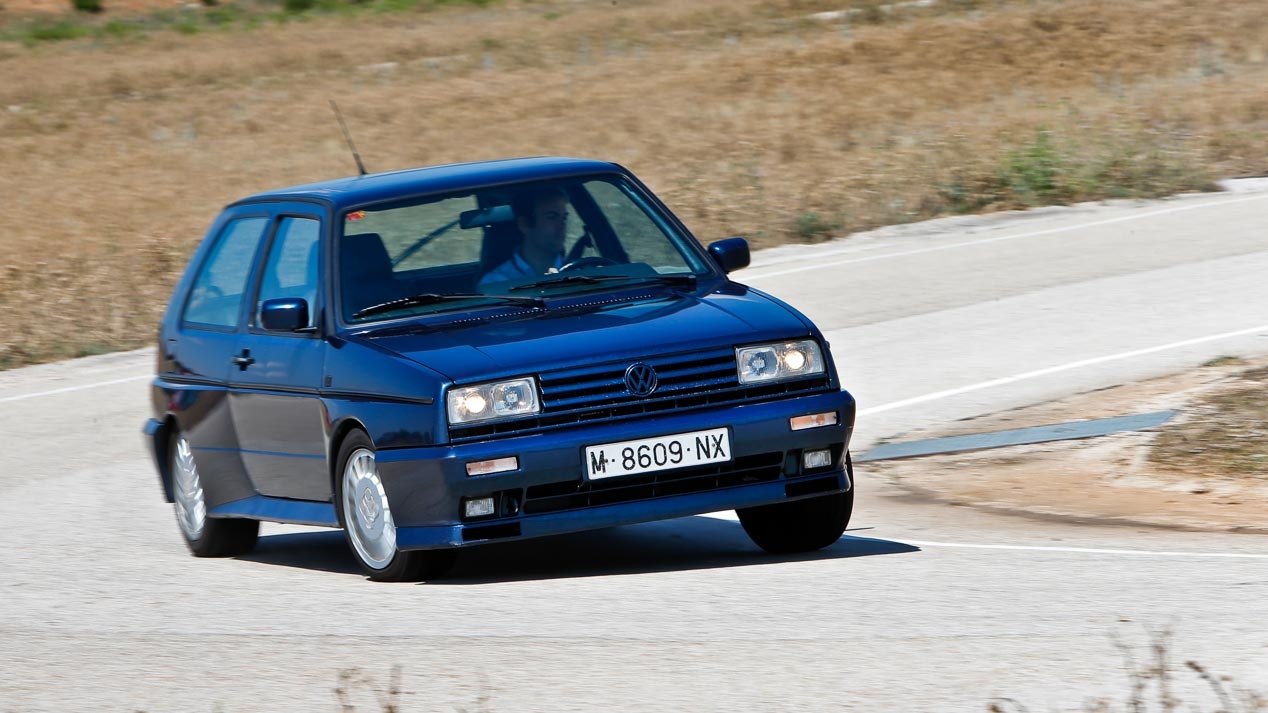
VW RALLYE GOLF TECHNICAL
Motor: 4-cylinder, transverse front
engine displacement: 1,763 cm3
Feeding: VW injection Digifant
Power160 hp at 5,800 rpm
Transmission: AWD cetral viscous coupling and tapered trailing direrencial Change: Manual of 5 relationships
Length x WIDTH X HEIGHT: 4.03 x 1.70 x 1.40 meters
Weight: 1195 kg
Maximum speed209 km / h
Consumption 90/120 / City7.1 / 9.0 / 12.5 l / 100 km
Production season: 1990.
… And then the Golf GTI G60
Since weight was the main brake Rallye, the GTI G60 launch of a front-wheel drive He made me think “Now yes’. And yes … more or less. the G60 He had almost everything good of a GTI, mainly as a sports and versatility as a daily car. And the good compressor G relative to a turbo then is that he had no response delay and margin utilization was great.
He was criticized GTI good motor skills was no longer enough to force engine, but in absolute terms it was not a slow car speed cornering nor those who are pulling the steering wheel when accelerating up to a lane change. Who were determined to crush the accelerator before the wheels were straight and hope the car solve the problem complained of interference traction in the direction, which is the equivalent of entering past a corner and complain that the car Does not turn. The EDS system, what braking the drive wheel slip more (Up to 40 km / h), it was more a help to start on slippery surfaces than the equivalent of a limited slip differential, which really did not need in a normally fast driving on slippery roads normally.
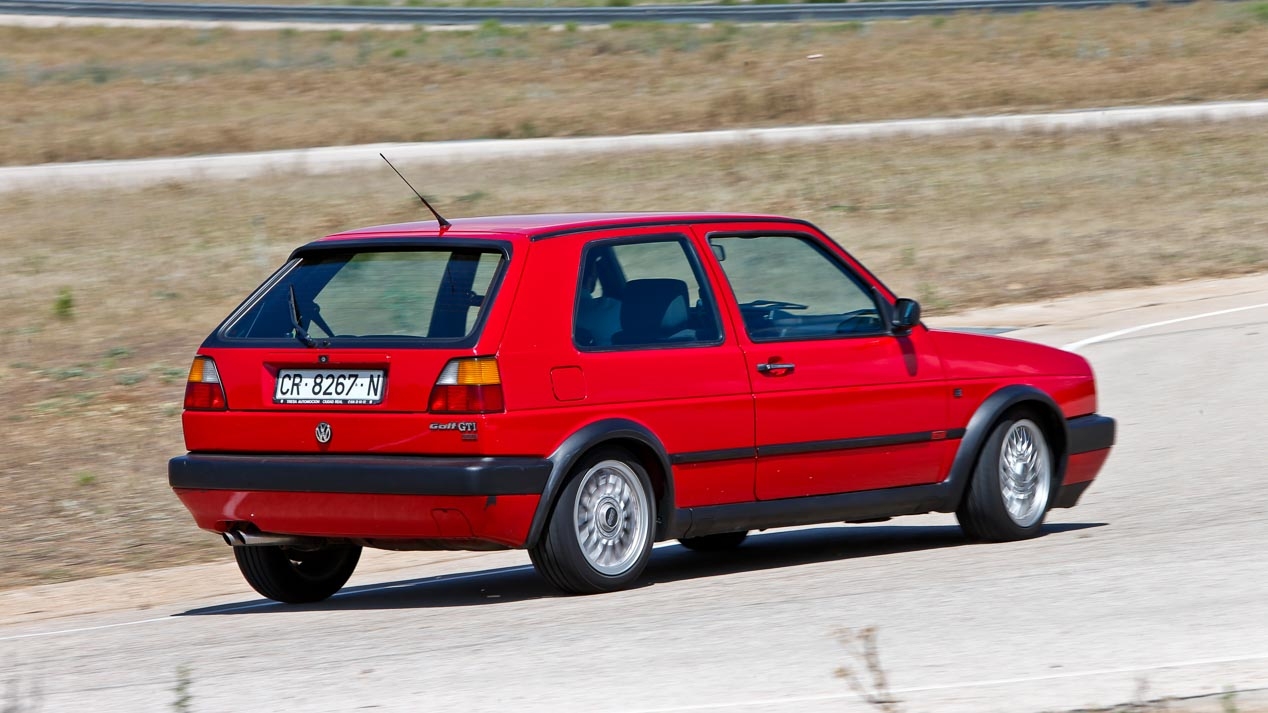
At an engine that did not have the force of turbos then joined a gearbox with some inappropriate relationships. Simplify manufacture, he had the same gear ratios and the same group as the sedan Passat G60. Instead of going shortie like other GTI, it did not reach the maximum speed in 5th. He also had a very large jump between second and third (a common defect of many German cars then regime fell 1.6 fold;.. If the second stretched up to 6,000 rpm, switching to the third was in 3750 Towards Final production GTI G60 (which was in late 1991), Volkswagen produced a short series of units with AWD Syncro, something like a rally without the distinctive body that version.
Everything we have counted to give an idea of how were the Rallye and G 60 when they hit the market. Today there are two very desirable cars if they are in good condition. I do not even mind having one of the few no units in which, after the compressor G is injured it, have changed by one type Roots. Of course, after a few months with the Rallye, trade it for a Mazda 323 GT-R, losing money.
TECHNICAL VW Golf GTI G60
Motor: 4-cylinder, transverse front
engine displacement: 1,781 cm3
Feeding: VW injection Digifant
Power160 hp at 5,800 rpm
Transmission: To the front wheels
Change: Manual of 5 relationships
Length x WIDTH X HEIGHT: 4.04 x 1.70 x 1.41 meters
Weight: 1080 kg DIN
Maximum speed216 km / h
Consumption 90/120 / City: 7.0 / 9.4 / 13.2 l / 100 km
Production season: 1990-1991
When Volkswagen decided on a volumetric turbocharger, Roots instead of the guy who was the most common, it was decided by the compressor “G”. Léon Creux patented in 1905, but required materials and production processes that did not exist then. The compressor operation key G is the sealing between a movable wall and a fixed, among which it is compressed air from the outside to the center (s centripetal compressor). It’s hard to get, especially when the car has many kilometers and has taken many turns compressor (the engine 1.7).

VW Golf Rallye first …
Before the release of GTI G60, the German mark showed a prototype car a product designed primarily competition, the Rallye Golf. He had almost everything that he could install a Mk2 Golf at that time, G60 engine and wheel drive Syncro, but not by 16 valve cylinder head production capacity. The displacement was reduced from 1,781 cm3 to normal 1,763 (Less diameter and the same stroke) to remain below the limit of 2.5 l by applying the factor 1.4 being supercharged.
As Racing Car Group A, he Rallye was a failure because models with more powerful turbocharged engines with a total system more effective traction faced. Only he ran three rallies of the championship 1990 and his best result was a third in New Zealand, against weak competition.

VW RALLYE GOLF TECHNICAL
Motor: 4-cylinder, transverse front
engine displacement: 1,763 cm3
Feeding: VW injection Digifant
Power160 hp at 5,800 rpm
Transmission: AWD cetral viscous coupling and tapered trailing direrencial Change: Manual of 5 relationships
Length x WIDTH X HEIGHT: 4.03 x 1.70 x 1.40 meters
Weight: 1195 kg
Maximum speed209 km / h
Consumption 90/120 / City7.1 / 9.0 / 12.5 l / 100 km
Production season: 1990.
… And then the Golf GTI G60
Since weight was the main brake Rallye, the GTI G60 launch of a front-wheel drive He made me think “Now yes’. And yes … more or less. the G60 He had almost everything good of a GTI, mainly as a sports and versatility as a daily car. And the good compressor G relative to a turbo then is that he had no response delay and margin utilization was great.
He was criticized GTI good motor skills was no longer enough to force engine, but in absolute terms it was not a slow car speed cornering nor those who are pulling the steering wheel when accelerating up to a lane change. Who were determined to crush the accelerator before the wheels were straight and hope the car solve the problem complained of interference traction in the direction, which is the equivalent of entering past a corner and complain that the car Does not turn. The EDS system, what braking the drive wheel slip more (Up to 40 km / h), it was more a help to start on slippery surfaces than the equivalent of a limited slip differential, which really did not need in a normally fast driving on slippery roads normally.

At an engine that did not have the force of turbos then joined a gearbox with some inappropriate relationships. Simplify manufacture, he had the same gear ratios and the same group as the sedan Passat G60. Instead of going shortie like other GTI, it did not reach the maximum speed in 5th. He also had a very large jump between second and third (a common defect of many German cars then regime fell 1.6 fold;.. If the second stretched up to 6,000 rpm, switching to the third was in 3750 Towards Final production GTI G60 (which was in late 1991), Volkswagen produced a short series of units with AWD Syncro, something like a rally without the distinctive body that version.
Everything we have counted to give an idea of how were the Rallye and G 60 when they hit the market. Today there are two very desirable cars if they are in good condition. I do not even mind having one of the few no units in which, after the compressor G is injured it, have changed by one type Roots. Of course, after a few months with the Rallye, trade it for a Mazda 323 GT-R, losing money.
TECHNICAL VW Golf GTI G60
Motor: 4-cylinder, transverse front
engine displacement: 1,781 cm3
Feeding: VW injection Digifant
Power160 hp at 5,800 rpm
Transmission: To the front wheels
Change: Manual of 5 relationships
Length x WIDTH X HEIGHT: 4.04 x 1.70 x 1.41 meters
Weight: 1080 kg DIN
Maximum speed216 km / h
Consumption 90/120 / City: 7.0 / 9.4 / 13.2 l / 100 km
Production season: 1990-1991

